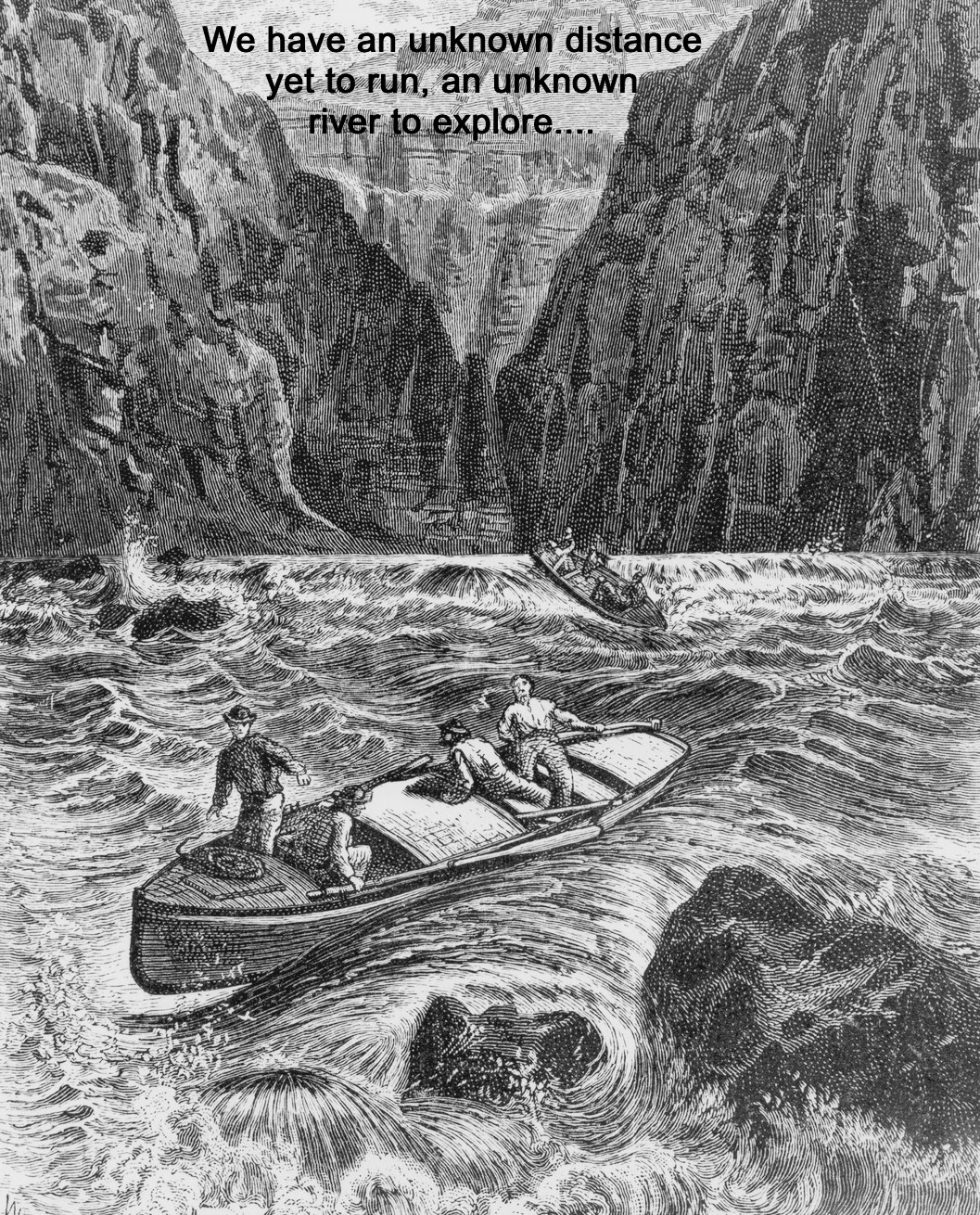
As we’ve seen over the past several posts here, humans have inhabited the region of what we now know as the Colorado River, Rio Colorado, River of Color, for ten or twelve millennia – in small wandering bands most of that time, hunters and foragers; then as their numbers grew in the mellow Holocene, they became settled farmers with increasing levels of regional socioeconomic organization to handle even larger numbers – then their increasingly complex cultures collapsed under still growing numbers, with great population loss, and the survivors went back to small farming communities; some even went back to hunting and foraging.
The remaining relatively stable first peoples in the region of the river were then disrupted half a millennia ago by invasions of Europeans experiencing their own homeland Holocene population explosions. Crossing the Atlantic Ocean, first from southern Europe, then mostly from northern Europe, and armed with guns and germs, they – we – overran and either destroyed or displaced most of the first peoples.
The Europeans knew the river first as two rivers. Coming northward from what we know as Mexico, the southern Euro-Americans encountered a desert river, an erratic on-and-off firehose of a river emerging from a region of canyons and flowing through hot and forbidding deserts – but being from the drier parts of Europe, they knew this land could be productive with water from the river. They named the river Rio Colorado, River of Color.
The other Euro-Americans, coming westward into the region a couple centuries later, found mountain rivers flowing out of snowpacks on the spine of the continent and rolling down to carve and create a mix of alluvial mountain valleys and canyons either inviting or challenging or both, depending on what you were looking for. These mountain rivers converged in high deserts and then disappeared into a region of canyons. The three largest confluences entering the canyons they named the Green and the Grand and the San Juan Rivers.
The Euro-Americans generally assumed, and eventually proved, that the mountain rivers that disappeared into the canyons and the desert river that emerged from the canyons were the same river, and eventually the whole river system came to be known as Rio Colorado, the Colorado River – a river of color, from its clear cold whitewater origins in the mountains to the warm muddy browns and reds of the silty soup that either poured or trickled into the Gulf of California, depending on the season.
Mary Austin, a wonderful writer about the river’s desert lands, told in her book, Land of Little Rain, of one small tributary of the Gila River, far down in the lower Colorado River Basin, a stream that was attributed with strange powers: ‘the fabled Hassayampa… of whose waters, if any drink, they can no more see fact as naked fact, but all radiant with the color of romance.’
As we get into the modern history of the human engagement with the River of Color, I find myself wondering if this Hassyampa disorder or whatever might not have spread through the entire Colorado River region (carried perhaps from stream to stream up to the headwaters by the endangered yellow-billed cuckoo). Why? Because it is really difficult to look at any of the interactions between the Euro-Americans and the Colorado River without seeing those interactions ‘all radiant with the color of romance.’ And to sit in judgment of those interactions today, with pursed lips, skeptical eyes and doggedly rational minds, wondering how rational human beings could have once been so cavalier about the naked facts, is just to say that today our cleansing and chlorinating of the river’s water succeeds in removing the romance along with the other pollutants. Good on us, but still….
What is ‘the radiant color of romance’? It’s more the radiance than any specific color – and requires a little contextual understanding of the word ‘romance.’ It is a degraded term today, equated mostly with the obsessive adolescent love, love, love that seemed to take over popular culture after World War II. But in earlier times, ‘romance’ covered any passionate human response to a quality or feeling of mystery, excitement, and uniqueness in the larger world; ‘romance’ is driven by the imaginative or emotional appeal of what is heroic, adventurous, remote, unknown, or idealized.
Romance clothes the ‘naked facts’ of a phenomenon like the Colorado River, a relatively modest river in actual water flow (naked fact), with visions of using it to make vast deserts bloom like the biblical rose, grow great cities as well as great crops, power great industries, convert the presumably infinite resources of a great land into wealth beyond the dreams of any previous peoples. And finally, today, for those grown tired of that kind of greatness – a nostalgic vision of the river returned to an airbrushed natural state, wildly perfect in a way that naked nature never pretended to. Romance may be best defined as the enthusiastic personal imagination that is essential for actual engagement with the otherwise merely naked facts of life – but too brilliant a romantic radiance can also blind us to some underlying realities that don’t change just because we don’t see them (or don’t want to)….
These reflections on ‘romance’ and the river are driven by the first book I’ve found about the Colorado River from the perspective of the Euro-American invasion: The Romance of the Colorado River, by Frederick Samuel Dellenbaugh, published in 1902.
Dellenbaugh’s personal introduction to the river was a real ‘baptism under water’: a seventeen-year-old looking for employment or adventure or both, he got hired in Chicago by Major John Wesley Powell for Powell’s second voyage through the canyons of the Green and Colorado Rivers in 1871. Dellenbaugh had never seen the Colorado River until he got in a boat with Major Powell in Green River, Utah, as the expedition’s artist and assistant topographer. It was, to say the least, an eye-opening experience when they plunged through the Gate of Lodore into twenty miles of rapids – and that, just the beginning.
Having survived that journey (not always sure he would), he became seriously bit by the Hassayampa bug. He traveled through the region, oddjobbing to stay alive as he collected every historic document he could find about early explorations of the river and its valleys – the Spaniards in the 16th and 17th century in the lower reaches of the river, the French and English trappers that essentially mined the beaver out of the river in the early 19th century while prospectors panned every stream looking for (and often finding) gold and silver.
Thirty years after the journey with Powell, he included all of that history in his Romance of the Colorado River, but the bulk of the book is his account of both the 1869 and 1871 Powell expeditions down the canyons – also the heart of the book, the heart of Dellenbaugh’s own romance with the river.
But I want to move on now to Major John Wesley Powell himself – one of the most interesting figures in America’s ongoing mostly civil war between the Industrial Revolution and the Agrarian Counterrevolution. (See previous post: Westward the Curse of Empire) And, I am going to argue, those trips down the canyons of the Colorado River also revealed the heart and guts of Powell’s romance with not just the river but the West.
Not everyone will agree that Powell had a romantic engagement with the river, or with anything; but I cannot see his first trip into the unknown canyon region of the river as anything other than a romantic soul engaging in a risky adventure beyond the range of good sense and reason. Foolhardy, in a word – or a calculated but risky gamble: Powell had things to say and do in the evolving American experience, and needed a big move to get his foot in the door of the rapidly expanding federal ‘survey of the West.’
Dellenbaugh, deep in Marble Canyon on the second trip, called him on that risk: ‘“Major, what would you have done on the first trip if just beyond that bend you had come upon a fall like Niagara?” He regarded me a moment with his penetrating gaze, and then answered: “I don’t know.”’
The Major himself had reflected on that posssibility in his own journalized account of the first journey (and probably also often at night trying to sleep), while the party was making it way through the punishments of Cataract Canyon: ‘May be we shall come to a fall in these canyons which we cannot pass, where the walls rise from the water’s edge, so that we cannot land, and where the water is so swift that we cannot return….’
In another great book about Powell, Beyond the Hundredth Meridian, Wallace Stegner states that ‘Powell’s party in 1869 only survived by the exercise of observation, caution, intelligence, skill, planning – in a word, Science.’ I would not deny that was how they survived, but it was certainly an override of caution that got them into the adventure in the first place; they also went in with no skill in negotiating large whitewater; and no planning or intelligence would have saved them had that mythic Niagara existed. He inserted himself – and his crew – into his own scientific research project, turning it into an experiment to test his own degree and quality of scientific discipline and courage.
Dellenbaugh saw that kind of self-testing in the Major: ‘Powell was fortified by Science, and he surmised that nowhere would he encounter any obstruction which his ingenuity could not surmount.’ Where do you draw the line between that kind of self-testing courage, and plain ‘gambler’s foolhardiness’? Powell’s example suggests that line can be drawn when the experiment ends and the test can be considered passed, or at least past: the scientist has survived his own experiment, and has learned enough to do it better next time. This is the romance of science.
Powell did a second trip through the Green River and Grand Canyons because the first trip had turned out to be more an adventure in survival than in good science; he went back as a scientist to do right by the ‘naked facts,’ untinged by the dark radiance of the unknown downriver.
There is a temptation to dwell longer on the canyon voyages, because they are fascinating, often in a somewhat morbid way. But having established, I hope, the probability that Powell’s rational and scientific mind was balanced by a romantic heart, I want to move on, next post here, to Powell’s followthrough on the reputation the journey gave him. But first, a last glimpse of his romantic side in the canyons.
Powell had an armchair bolted to the deck of the boat he rode in on the second trip, the better to study the passing canyonscape – a romantic image in itself, the one-armed Major sitting regal in his armchair (probably not through the rapids), overseeing the river of his, and our, destiny. But Dellenbach recorded another use for the chair: ‘“The temperature was now often 99 degrees F. in the shade, and rowing on the slow current was irksome, so we lashed the boats together and drifted along while the Major in his armchair read aloud selections from Scott, Emerson, and others….’
Powell’s second canyon trip was funded by the federal government; he was by then working for the U.S. Geographical and Geological Survey as head of Rocky Mountain exploration. If the first trip was a gamble, it had paid off. And he wasted no time in getting about his ‘surveying’ of the remaining parts of the West where Euro-American settlements and unsettlements had not yet come to dominate – which included most of the Colorado River region.
Among other things, he set some standards for an ethnographic approach to the first peoples who were still trying to live culturally in the region as they previously had, despite the ‘transformations’ wrought by the Hispano-American gifts of the horse and the poxes. To say that more plainly: he was the first Euro-American to look at the first peoples as human cultures from which something might be learned about adapting to difficult arid and semiarid environments, rather than seeing those peoples as just a form of wildlife to be removed from good land and sequestered in the truly undesirable places.
But Powell more or less put his heart on his sleeve in 1879, on larger national issues, with a ‘Report on the Lands of the Arid Region,’ which went beyond just a report, and became a recommendation for changes in western land policy that would make it possible to realize the ‘Agrarian Counterrevolution’ in the desert region. It was the opening shot in a campaign: Powell was going to try to rein in, slow down, even temporarily stop the Industrial Revolution in its ever-proliferating tracks….
Stay tuned; back soon.
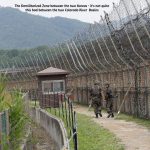
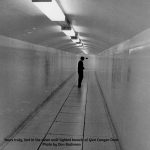
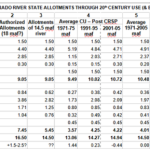
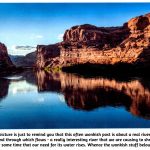
So wonderfully detailed!! THANKS GEORGE!! Glo
Thanks, George, for more here-to-fore (in my sad case) unknown information, about the great “River of Color,” and including Powell guarantees boggle-eyed readers. Hassyampa effect bit deeply into the bones of 17 year-old Dellenbaugh (Dellenbach? I might have Gargled it, but to me it doesn’t really matter; great bit.), who signed on for what turned out to be the trip of his lifetime. How many Colorado river runners had that same experience? Just happened along and wound up being taken for life?
Ultimately, and again, we come away with another awful endorsement of the white man’s obviously by now innate drive to have it all; just too hard to get along with. Take what you need and leave the rest? A hippie pipe dream. What WE White Folks need is all of it.
Thanks again for another writing job well done.
Awe-inspiring reading experience. Captivating. I am always enriched by your perspective.
I get completely immersed in your thoughts and writing. Looking forward to another.
Thank you George